There’s a time and place for everything.
A time to rebrand.
A time to refresh.
But, really, what’s the difference?
Brand Refresh
Put simply, a brand refresh is a tactical manoeuvre. It’s purely cosmetic. A brand refresh generally involves updating how your brand looks, how it sounds, and maybe even how it acts – without relinquishing its heritage or integrity. A brand refresh signals to the market that you’re switched on.
Rebrand
A rebrand, on the other hand, is a strategic move. It involves fundamental change. It’s a complete transformation designed to dramatically alter perception. Rebranding represents a declaration of intent. It signals something meaningful has taken place.
So when might a rebrand be justified and when could a refresh be sufficient? It ultimately boils down to whether you need evolution or revolution.
Let’s look at some examples.
1. For legal reasons, you’re compelled to change
This one’s a no-brainer. Brands, if properly managed, are protected by trademarks. If you are guilty of trademark infringement, whether consciously or not, your only option is to remediate and rebrand.
For example, in July 2019, it was widely reported that the European Union is trying to prohibit Australian wine producers from marketing wine labelled ‘Prosecco’. The move follows the protected status of champagne on the basis of its “geographic indication”. If successful, other products such as feta and parmesan could also be affected. That may require them to rebrand.
 2. Your brand has suffered severe reputational damage
2. Your brand has suffered severe reputational damage
Brands withstand crises every day. However, in the wake of a severe public relations crisis, the best, or only, option may be to rebrand.
Sometimes it’s necessary to leave the past behind. That doesn’t mean to say you can pretend the crisis never happened – far from it. But you can draw a line in the sand.
A brand crisis can take any number of forms. It might stem from a product recall, environmental catastrophe, white collar crime, or a large-scale data breach.
In every scenario, erosion of trust will inevitably be one of the most damaging consequences.
Rebranding could erase the negative association between your brand and the crisis. The proviso is, of course, that you do more than simply apply a coat of paint. It goes without saying you will have taken responsibility, responded appropriately, disassociated your brand from any guilty parties, and taken steps to ensure a repeat event will not occur.
Finally, to restore loyalty and regain trust, you’ll also need to remind your stakeholders of your vision and demonstrate that you continue to share their values.
For example, in July 2019 it was reported that Ryanair, one of the world’s largest airlines, appears to be rebranding its Boeing 737 Max jets as “737-8200” in response to customers’ reluctance to fly on the plane in the wake of two fatal crashes.
 3. You’ve gone through a merger or acquisition
3. You’ve gone through a merger or acquisition
When a merger or acquisition is in motion, or in the wings, consideration must be given to the value of each brand name. Would the best approach be to transition to the acquiring company’s name, retain both brands, dual brand (combine the two names), or create a new brand altogether?
A word of warning: 2006 MIT research of 200-plus mergers and acquisitions completed since 1995 found M&A due diligence tends to focus on tangible assets. Brand strategy typically received serious attention only after a deal was approved, signaling rebranding is viewed as a clean-up task, rather than a matter of strategic intent.
In 2018, AT&T completed its acquisition of Time Warner, the parent company of CNN and HBO, and rebranded as Warner Media. The rebrand was considered necessary to position Time Warner as a media company, and distance it from its cable company heritage.
 4. The market’s changing and so must you
4. The market’s changing and so must you
Your market isn’t static and nor are your competitors. In dynamic markets, a rebrand or brand refresh might occasionally be required to stay top of mind.
This one’s risky because you don’t want to erode brand equity in the process.
A good example is Mailchimp’s brand refresh which was reportedly undertaken to shake things up and signal that it’s keeping pace, is modern, and has something fresh to talk about.
 5. Your visual identity is out-of-date or ineffective
5. Your visual identity is out-of-date or ineffective
Perhaps your market position is sound but your visual identity (logo, colour palette, fonts, imagery) and voice identity (messaging, tone of voice) have become outdated.
Similarly, many businesses are still adjusting to the digital era, realising that their name, logo and other brand elements are not well suited to digital use and global markets. In these situations, a modern refresh could be in order.
In 2010, PricewaterhouseCoopers rebranded to the shorter and more digital-friendly PWC. Ensuring its brand – logo, in particular – was suitable for space-restricted online environments is understood to have been PWC’s priority.
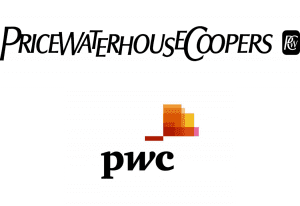
6. You look and sound the same as everyone else
Sometimes sectors or categories become homogenous. Not only do the brands all look the same and sound the same, it’s near impossible to find any real points of difference. This is especially true in professional services categories which are often hopelessly vanilla.
Branding is one way your business can distinguish itself from its competitors. If your brand is more same-same than different, a creative refresh and repositioning strategy will help you stand out. The challenge is to understand and articulate what makes your brand and business unique.
In 2018, to present as an integrated and unified network, professional services firm Crowe Horwarth rebranded its 220 member firms as Crowe Global. In doing so, Crowe sought to protect its historic identity while preparing for future growth; and to promote its network’s shared values and resources through a common brand.
 7. Your brand has lost its way
7. Your brand has lost its way
Sometimes brands become confused, inconsistent, overly complicated, diluted. It can happen there’s a high turnover of marketing staff, when there’s no brand guardian, when a brand’s visual and voice guidelines are difficult to interpret or ignored, or even just with the passage of time. If your brand looks and sounds confused a brand refresh might help you re-focus.
Earlier this year, messaging app Slack switched out its logo as part of a refresh of its visual identity. It’s justification? Inconsistency of execution.
“Our first logo was created before the company launched. It was distinctive, and playful, and the octothorpe (or pound sign, or hash, or whatever name by which you know it) resembled the same character that you see in front of channels in our product. It was also extremely easy to get wrong. It was 11 different colors—and if placed on any color other than white, or at the wrong angle (instead of the precisely prescribed 18º rotation), or with the colors tweaked wrong, it looked terrible. It pained us.”
 8. Your brand is no longer relevant
8. Your brand is no longer relevant
To stay competitive, brands must constantly evolve.
You might think you’re target audience is the same as it was 10 or 15 years ago but generational change is real. What worked back then won’t necessarily work now. A refresh will help you to remain relevant and contemporary.
In 2017, Häagen-Dazs was perceived as being stuffy and old fashioned. Its 2018 brand refresh was designed to make it more modern, vibrant and appealing to millennials. The refurb included a new logo, more colourful packaging and new flavors, backed by a global ad campaign.
 9. Your strategy, delivery model or business has changed
9. Your strategy, delivery model or business has changed
Perhaps your business wants to reposition itself in the market, or appeal to a new market. Maybe the clients and markets you’re targeting have changed significantly.
If your strategy, positioning or target market have changed, whether by choice or in reaction to external forces, your brand may need to as well.
In this scenario, a critical success factor is your brand strategy. Where is your brand positioned in the market? What’s your value proposition? What distinguishes your brand? What makes your brand unique?
Majestic, the UK’s largest specialist wine retailer, might soon dispose of its British shops and become an online-only operation. One of the tell-tale signs is the company’s decision to dump the Majestic name and operate under the Naked Wines brand.
 10. You’re trying to reposition
10. You’re trying to reposition
In the Amazon era, bricks and mortar retailers worldwide are struggling to compete.
Many, such as Majestic (see above), are being driven online.
Others are responding by developing higher value offerings and by targeting the more lucrative business-to-business market.
If your business is trying to reposition, a rebrand or strategic brand refresh is worth considering.
Branding is all about perception. It affords you the opporunity to reintroduce yourself to your new target market.
Understand, however, this strategy is easier for product brands, than services brands. If yours is a services brand, anything cosmetic will only buy you time. Unless other things also change, your stakeholders will soon see through the smoke and mirrors.
The 2019 rebrand of US stationery behemoth Staples is all about transitioning the company from a commoditised product position (B2C) to a solution-based service (B2B) supplier.
 11. You have a new CMO
11. You have a new CMO
Do nothing!
The appointment of a new CMO is not a worthy reason to rebrand or even refresh your brand. Don’t allow one individual’s ego or desire to undertake a career-defining project guide you.



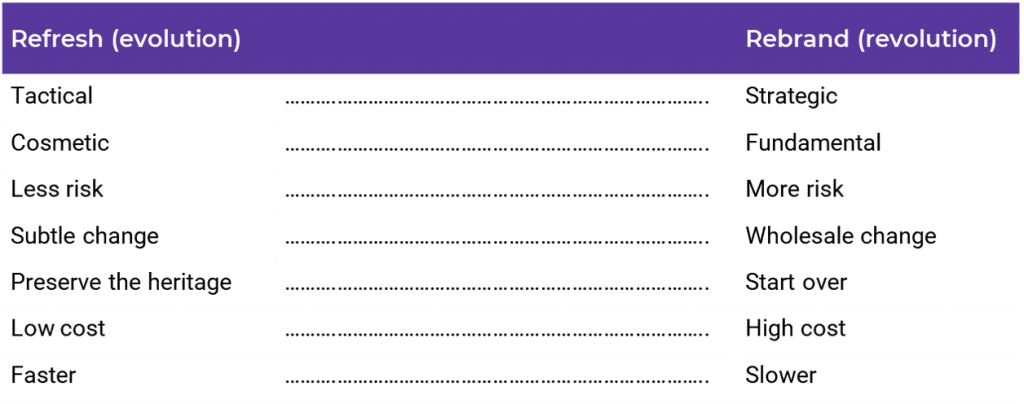
 2. Your brand has suffered severe reputational damage
2. Your brand has suffered severe reputational damage 3. You’ve gone through a merger or acquisition
3. You’ve gone through a merger or acquisition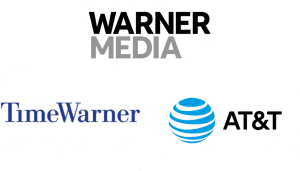 4. The market’s changing and so must you
4. The market’s changing and so must you 5. Your visual identity is out-of-date or ineffective
5. Your visual identity is out-of-date or ineffective 7. Your brand has lost its way
7. Your brand has lost its way 8. Your brand is no longer relevant
8. Your brand is no longer relevant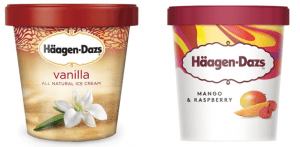 9. Your strategy, delivery model or business has changed
9. Your strategy, delivery model or business has changed 10. You’re trying to reposition
10. You’re trying to reposition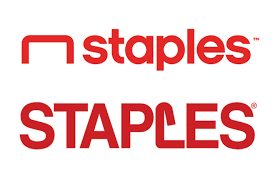 11. You have a new CMO
11. You have a new CMO


